Featured Articles
How Mares Beat Moreno
 Abner Mares fought like a man possessed on way to successfully defending his WBC super-bantamweight title against Anselmo Moreno on Saturday night, in what turned out to be the Panamanian’s first defeat in more than a decade.
Abner Mares fought like a man possessed on way to successfully defending his WBC super-bantamweight title against Anselmo Moreno on Saturday night, in what turned out to be the Panamanian’s first defeat in more than a decade.
I’ll be honest here. Prior to the fight, while Mares’ high volume and aggression would likely prove troublesome on the scorecards for the counter punching Moreno, I thought the slick southpaw wizard’s jab and superior mobility would be enough to keep the young Mexican turning and following, resulting in Moreno winning a close decision even though Mares would likely be the one receiving the benefit of the doubt in many of the close rounds based on him being perceived as the “effective aggressor”.
Well, there were certainly some close rounds during the fight, some of which could have gone either way. In the end, however, it turned out that not only was Mares awarded many of those close rounds, but also the rounds in which he seemed to clearly come off second best to Moreno as well. Mares was given the verdict by scores of 116-110 twice, and a truly mind boggling margin of 120-106 by James Gen-Kim.
Although I thought the fight was closely contested –not a robbery- and that Moreno was on the wrong side of some choice officiating –the knockdown in the 5th and the point deduction in the 11th were questionable- I must concede that Abner Mares fought a very good strategic fight against an opponent who’s difficult to work out. Moreno’s style is designed to frustrate and spoil. It’s not easy to keep pressing the attack when you’re faced with an elusive target like Moreno, who is constantly turning, slipping and sliding to his positions. Moreno has a way of disrupting an opponent’s rhythm by moving away, allowing them to close the distance on him before quickly switching direction behind a jab or a hook before starting over, or by blunting an attack by ducking underneath and forcing a clinch. Vic Darchinyan is a solid fighter yet he was mastered like never before or since at the hands of Moreno. At no point in their fight was Darchinyan successful in pinning Moreno to the ropes or in getting beyond Moreno’s right shoulder posture and straight left hand. Although Mares’ physical strength at 122 pounds and Moreno’s lack thereof had plenty to do with the final outcome, I feel Mares’ style and choice of tactics were also largely responsible.
Here, I’d like to focus on some of the key areas where Abner Mares had success against Anselmo Moreno Saturday night. Anselmo Moreno’s style is tough to figure out. Abner Mares found a way.
As on display {above} against Frederic Patrac here, circling behind the double jab is the staple of Moreno’s game. This is how he occupies his opponents as he’s moving to his positions. Notice how Moreno escapes to his opponent’s blindside, over their left shoulder and away from their trailing hand as he’s throwing the double jab. By the time his opponent responds and turns, Moreno has already exited, taken an angle on them. Again, this is how Moreno remains one step ahead of his opponents.
By contrast, notice how Mares has backed Moreno into the corner. As Moreno tries to exit via his double jab, Mares slips, parries, then counters the first Moreno jab with a right cross. As a result, Moreno is forced to abandon his second jab and retreat. Compare Mares’ body alignment to that of Patrac’s in the final pictures above.
Unlike Frederic Patrac, by anticipating the double jab and then countering over the top of it, Mares has avoided being turned by Moreno.
Mares was also effective in forcing Moreno to the ropes.
As Moreno throws a jab, Mares is able to slip outside and rush Moreno. Because Mares is explosive and quick with his charge, Moreno can’t do a thing but fall back to the ropes, where Mares unleashes a barrage of body shots. See how Mares gets his lead foot outside of Moreno’s as he’s charging in.
Mares knew how to deal with an elusive target on the inside as well.

Look here how Darchinyan is thinking of nothing but hitting the head as Moreno is up against the ropes. In this position, Moreno’s head is the only thing that can move. Darchinyan neglects this fact and aims for it anyway. Moreno, a defensive specialist, ducks under the punch and easily moves away from the ropes and away from any danger.
Compare how Mares attacked Moreno in the same position.

As Moreno is backed into the ropes, Mares knows that he’s slick and will be trying to avoid head shots by bending at the waist. As a result, Mares goes about throwing combinations, lefts and rights to both sides of Moreno’s lower body. Even if the shots aren’t landing clean, Mares is still winning the exchange by keeping Moreno on the defensive -one can’t win a fight without first throwing punches.

See how Mares intentionally throws a right hand short of the target, in order to allow himself to come back with a left hook to the body. This is first rate combination punching. Moreno can spot the first blow, but the second shot to the body, is not so easy to detect because it was well disguised.
Abner Mares was comfortable in the center of the ring too. Obviously, part of Mares’ strategy was to stay aggressive and not to give Moreno an inch, but there had to be moments of calm before the storm. Had Mares attacked in a reckless manner, then Moreno would have picked him apart on the way in.
There were a few moments during the fight when Mares actually turned counter puncher in an attempt to find an opening to launch his high pressured assault.

Look how Mares feints a half jab for Moreno to counter with a left straight. As Moreno throws the left straight, Mares ducks and lands an overhand right {a shot he had repeated success with against Moreno}. One of the most useful weapons against a counter puncher is the feint. By feinting, Mares was able to draw out a lead from Moreno, so he could then counter Moreno’s initial counter.
Another main reason why Mares was successful against Moreno was because he avoided throwing single shots.

See here how Darchinyan throws one shot at a time. As Vic throws a jab and leaves it hanging, Moreno slips outside and counters with a straight left to the body. Moreno immediately comes back with a jab, followed by a straight left hand to the head of Darchinyan. Vic was easily countered because Moreno knew he only threw single shots in the center of the ring. Moreno landed three shots to Vic’s one.

Let’s see how Mares attacked. Moreno is in his usual defensive posture –left glove by the chin, right shoulder facing Mares. A common attack for an orthodox fighter to lead with is a jab, followed by a right hand. Moreno is a brilliant counter puncher and he obviously knows what punches to expect during certain scenarios in the ring. This is where Mares is very hard to figure out. As Mares comes forward, he leads with a left uppercut, followed by a right cross. Although the pictures don’t show it, Mares is actually punching as he’s moving. Needless to say, as Mares is advancing, Moreno probably isn’t anticipating such an unpredictable attack combination. Counter punchers thrive on anticipation. Mares’ attacks against Moreno gave him nothing to key off.
Of course, the fight wasn’t all one way traffic. Anselmo Moreno had plenty of success himself later in the fight, especially with his body punching. But for me, Abner Mares did enough to stymie Moreno’s style and deserved the decision. Mares managed to handle Moreno in a way that no fighter has managed before because of:
-
High volume, particularly in combination.
-
Speed advantage.
-
Far superior physical strength at 122 pounds.
-
Extensive body punching.
-
Unpredictability of attack.
-
Ability to counter a counter puncher.
-
Unrelenting inside after shortening the distance.
Moreno, on the other hand, had some success but ultimately fell short because of:
-
An inability to inflict any real hurt or damage on Mares.
-
Unable to keep Mares off because physical strength at 122 pounds isn’t as prominent.
-
Inability to avoid the ropes.
-
Relatively low volume.
-
Often on the back foot in a fight going to the score cards.
Regardless of what the judge’s cards suggest, the fight was close and it was contested at a really high level of skill. It was a pleasure to watch two elite talents, both in their primes, test their skills against one another and leave everything on the line the way they did. As always, one man had to lose and unfortunately for him, that man was Anselmo Moreno. I’m certain he’ll likely feel hard done by with the wide scoring, but as I mentioned earlier, this can’t really be deemed a robbery of any kind. Yes, it was reasonably close, but having watched it twice now, I felt there was a clear winner. One man seemed to want it slightly more than the other. That man was Abner Mares.
-

 Featured Articles4 weeks ago
Featured Articles4 weeks agoAvila Perspective, Chap. 330: Matchroom in New York plus the Latest on Canelo-Crawford
-
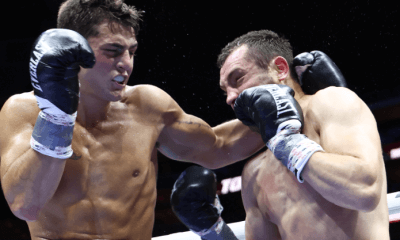
 Featured Articles3 weeks ago
Featured Articles3 weeks agoVito Mielnicki Jr Whitewashes Kamil Gardzielik Before the Home Folks in Newark
-
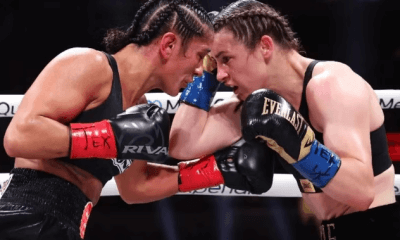
 Featured Articles22 hours ago
Featured Articles22 hours agoResults and Recaps from New York Where Taylor Edged Serrano Once Again
-
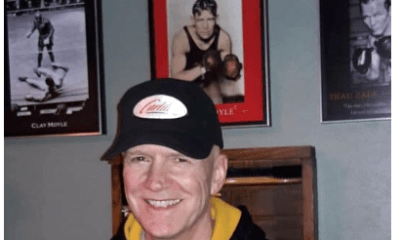
 Featured Articles4 weeks ago
Featured Articles4 weeks agoCatching Up with Clay Moyle Who Talks About His Massive Collection of Boxing Books
-
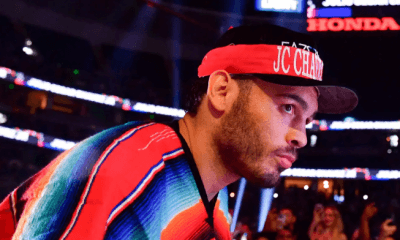
 Featured Articles5 days ago
Featured Articles5 days agoFrom a Sympathetic Figure to a Pariah: The Travails of Julio Cesar Chavez Jr
-
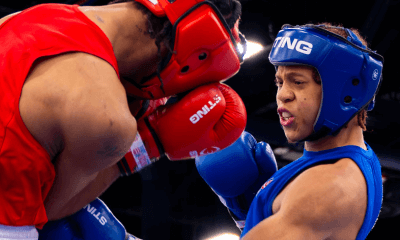
 Featured Articles3 weeks ago
Featured Articles3 weeks agoMore Medals for Hawaii’s Patricio Family at the USA Boxing Summer Festival
-
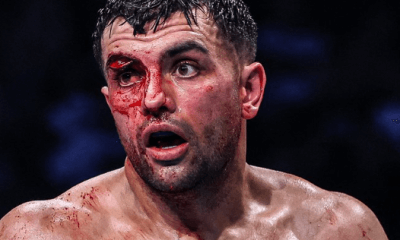
 Featured Articles1 week ago
Featured Articles1 week agoCatterall vs Eubank Ends Prematurely; Catterall Wins a Technical Decision
-
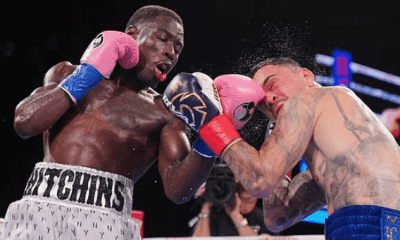
 Featured Articles4 weeks ago
Featured Articles4 weeks agoRichardson Hitchins Batters and Stops George Kambosos at Madison Square Garden




















